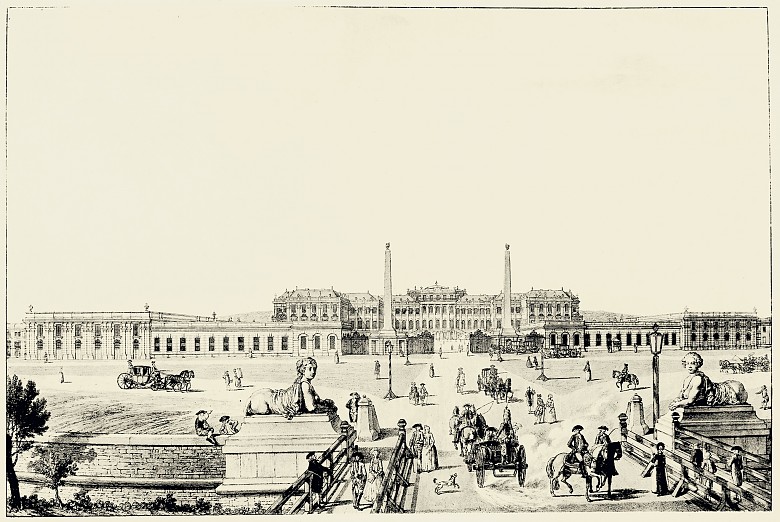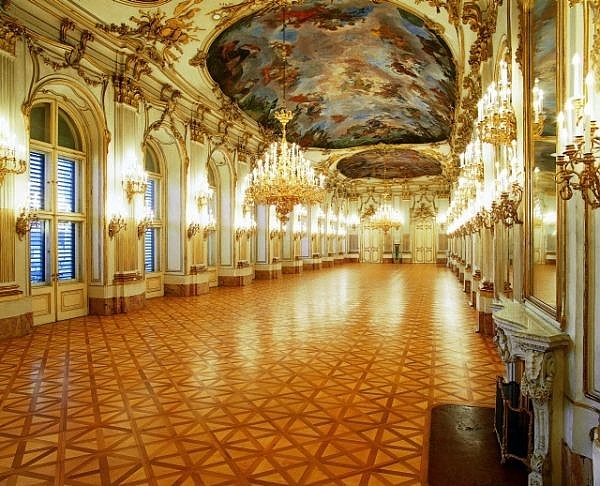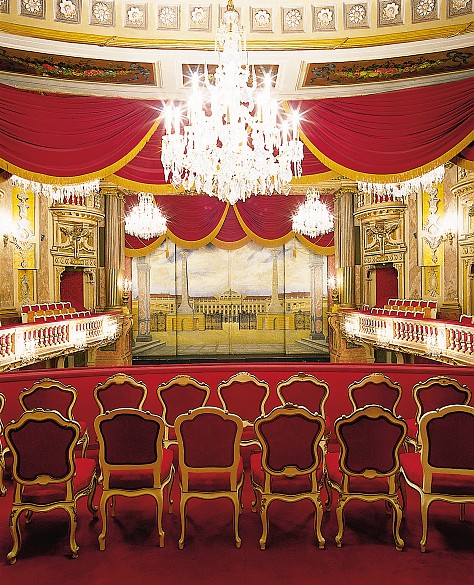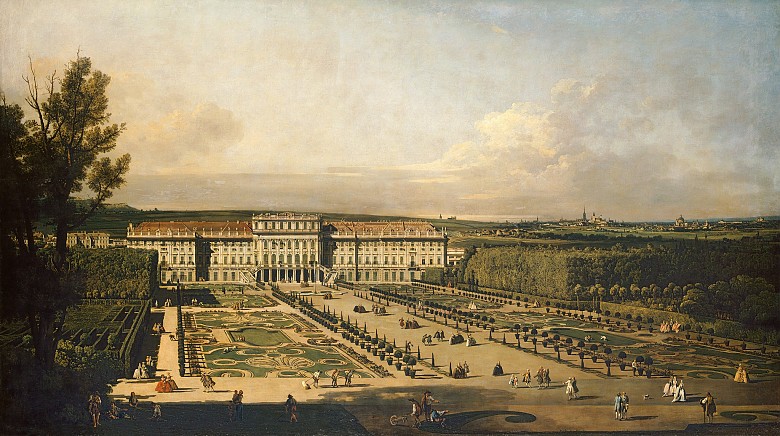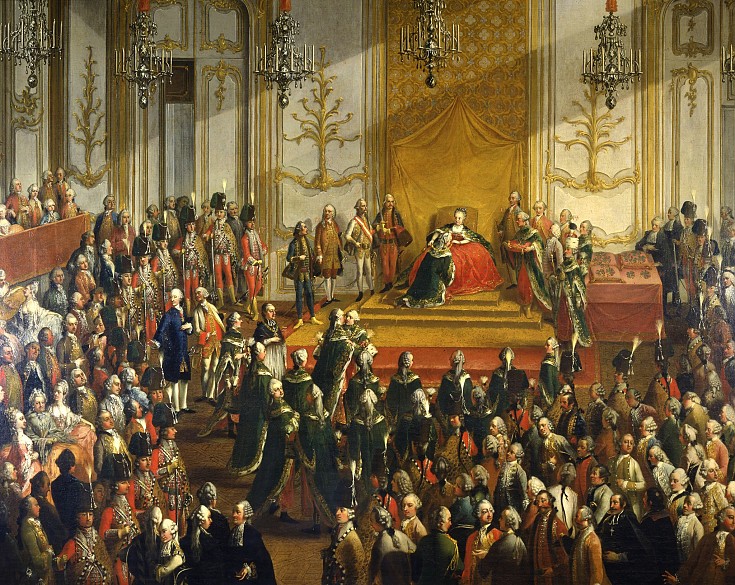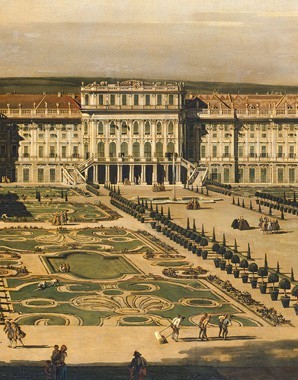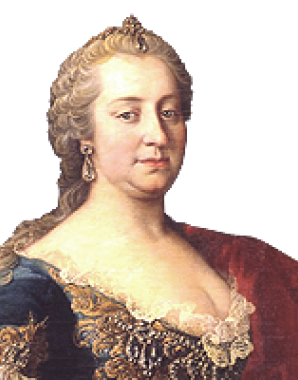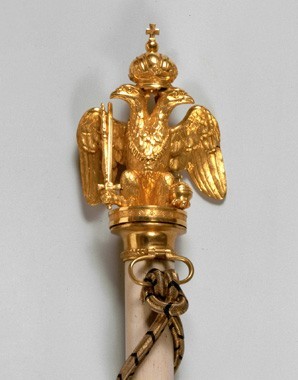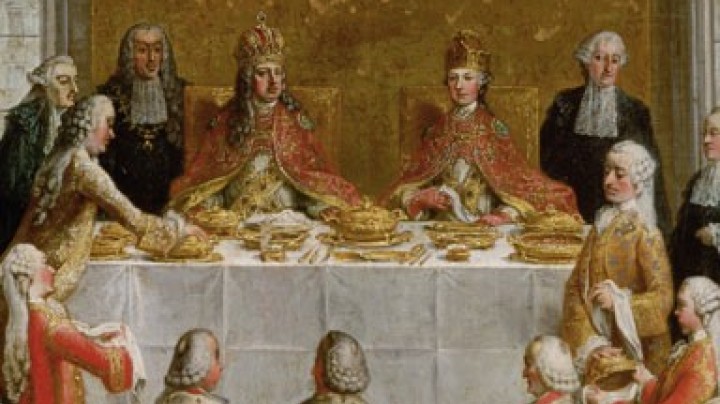With pomp and circumstance – Schönbrunn as the arena of the Imperial Court
In Schönbrunn Palace Maria Theresa created an imposing stage on which the Court could display itself. The elaborate festivities and ceremonial routines of the Court served to demonstrate its status as the foremost court of the Holy Roman Empire.
Even the approach to the palace is like a skilfully staged progress towards the presence of the monarch. Avenues lead to the main gate which is flanked by two obelisks crowned with eagles as symbols of imperial sovereignty. Once through the gates, one is confronted with the vast open space of the cour d’honneur, at the other end of which stands the palace itself.
In Maria Theresa’s time, the formal route into the interior of the palace led via the perron (exterior stairway) to the main chamber, the Great Gallery. With its impressive dimensions and allegorical programme of frescoes, this room is a medium of dynastic self-representation. The visitor is confronted with a glorification of the House of Habsburg, its imperial traditions and traditional monarchical virtues. From the Great Gallery distinguished visitors proceeded via a series of state rooms, each with its own significance for court ceremonial, until they reached the Imperial Apartments at the heart of the complex.
The park was an integral part of this complex, as a symbol of Nature subjected to monarchical will and as a spectacular backdrop for summer festivities, evening illuminations and firework displays. Music, an art cultivated at the highest level at the Habsburg Court and one that was also deployed to serve the needs of courtly display, took the form of sumptuous operas and serenatas, dances and ballets, for which parts of the palace or its gardens were adapted. There was also a permanent stage available in the palace theatre at Schönbrunn.
An idea of the almost unimaginable extravagance of the ephemeral festive decorations made for such activities can be gained from a series of large-format ceremonial paintings that Maria Theresa commissioned to immortalize the most splendid festivities of her reign for posterity; these paintings now constitute one of the highlights of tours of the palace.
Late traces of this courtly magnificence can be felt when the state rooms at Schönbrunn are used by the Austrian government for official receptions and ceremonies, and the Republic basks in the borrowed imperial splendour of bygone ages …
